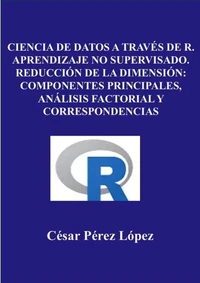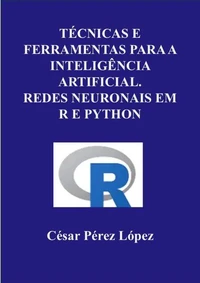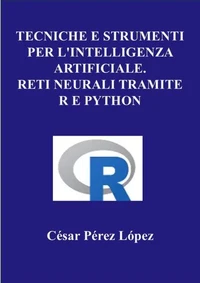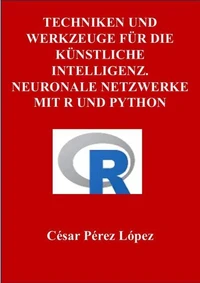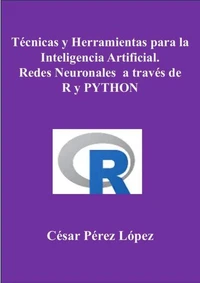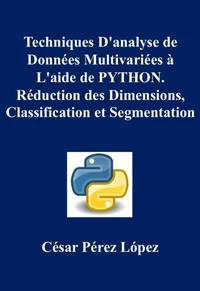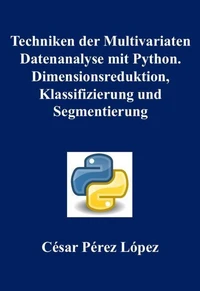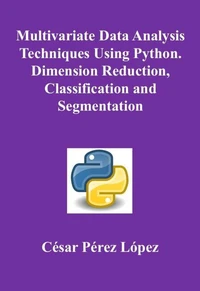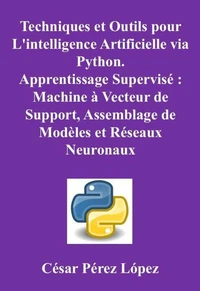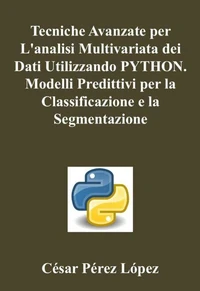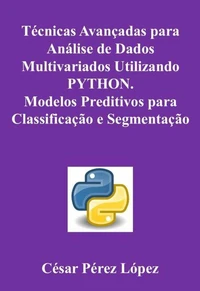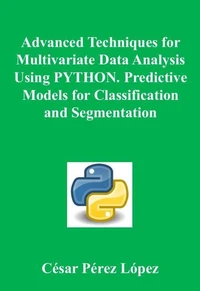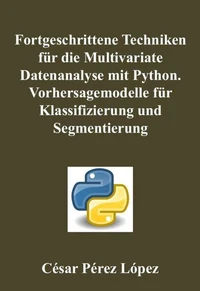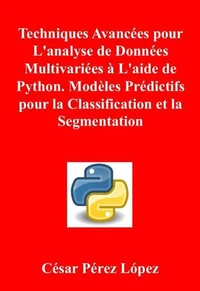Nouveauté
Techniques and Tools for Artificial Intelligence. Neural Networks via R and PYTHON
Par :Formats :
Disponible dans votre compte client Decitre ou Furet du Nord dès validation de votre commande. Le format ePub est :
- Compatible avec une lecture sur My Vivlio (smartphone, tablette, ordinateur)
- Compatible avec une lecture sur liseuses Vivlio
- Pour les liseuses autres que Vivlio, vous devez utiliser le logiciel Adobe Digital Edition. Non compatible avec la lecture sur les liseuses Kindle, Remarkable et Sony
 , qui est-ce ?
, qui est-ce ?Notre partenaire de plateforme de lecture numérique où vous retrouverez l'ensemble de vos ebooks gratuitement
Pour en savoir plus sur nos ebooks, consultez notre aide en ligne ici
- FormatePub
- ISBN8231818204
- EAN9798231818204
- Date de parution22/07/2025
- Protection num.pas de protection
- Infos supplémentairesepub
- ÉditeurWalzone Press
Résumé
Artificial Intelligence combines mathematical algorithms and Machine Learning, Deep Learning and Big Data techniques to extract the knowledge contained in data and present it in a comprehensible and automatic way. In this book, the use of neural networks for supervised and unsupervised learning is discussed in depth. Regarding supervised learning, the most common architectures are considered, such as Multilayer Perceptron, Radial Basis Network, ADALINE Networks, HOPFIELD Networks, Probabilistic Networks, Linear Networks, Generalised Regression Networks, LVQ Networks, Linear Networks and Networks for Regression Model Optimisation.
In this section of supervised analysis, special attention should be paid to Neural Networks for Time Series Prediction such as the LSTM Network, GRU Networks, Recurrent Neural Networks RNN, NARX Networks, NNAR Networks and, in general, Dynamic Neural Networks. Unsupervised learning develops Pattern Recognition and Cluster Analysis Networks such as KOHONEN Networks (SOM Self-Organising Maps), Pattern Recognition Networks, Autoencoder Neural Networks, Transfer Learning Networks, Anomaly Detection Networks and Convolutional Neural Networks.
The following topics describe methodologically the architectures of the different types of neural networks and their usefulness in practical applications. In addition, for each type of neural network, examples are presented with an optimal syntax in the R and Python languages.
In this section of supervised analysis, special attention should be paid to Neural Networks for Time Series Prediction such as the LSTM Network, GRU Networks, Recurrent Neural Networks RNN, NARX Networks, NNAR Networks and, in general, Dynamic Neural Networks. Unsupervised learning develops Pattern Recognition and Cluster Analysis Networks such as KOHONEN Networks (SOM Self-Organising Maps), Pattern Recognition Networks, Autoencoder Neural Networks, Transfer Learning Networks, Anomaly Detection Networks and Convolutional Neural Networks.
The following topics describe methodologically the architectures of the different types of neural networks and their usefulness in practical applications. In addition, for each type of neural network, examples are presented with an optimal syntax in the R and Python languages.
Artificial Intelligence combines mathematical algorithms and Machine Learning, Deep Learning and Big Data techniques to extract the knowledge contained in data and present it in a comprehensible and automatic way. In this book, the use of neural networks for supervised and unsupervised learning is discussed in depth. Regarding supervised learning, the most common architectures are considered, such as Multilayer Perceptron, Radial Basis Network, ADALINE Networks, HOPFIELD Networks, Probabilistic Networks, Linear Networks, Generalised Regression Networks, LVQ Networks, Linear Networks and Networks for Regression Model Optimisation.
In this section of supervised analysis, special attention should be paid to Neural Networks for Time Series Prediction such as the LSTM Network, GRU Networks, Recurrent Neural Networks RNN, NARX Networks, NNAR Networks and, in general, Dynamic Neural Networks. Unsupervised learning develops Pattern Recognition and Cluster Analysis Networks such as KOHONEN Networks (SOM Self-Organising Maps), Pattern Recognition Networks, Autoencoder Neural Networks, Transfer Learning Networks, Anomaly Detection Networks and Convolutional Neural Networks.
The following topics describe methodologically the architectures of the different types of neural networks and their usefulness in practical applications. In addition, for each type of neural network, examples are presented with an optimal syntax in the R and Python languages.
In this section of supervised analysis, special attention should be paid to Neural Networks for Time Series Prediction such as the LSTM Network, GRU Networks, Recurrent Neural Networks RNN, NARX Networks, NNAR Networks and, in general, Dynamic Neural Networks. Unsupervised learning develops Pattern Recognition and Cluster Analysis Networks such as KOHONEN Networks (SOM Self-Organising Maps), Pattern Recognition Networks, Autoencoder Neural Networks, Transfer Learning Networks, Anomaly Detection Networks and Convolutional Neural Networks.
The following topics describe methodologically the architectures of the different types of neural networks and their usefulness in practical applications. In addition, for each type of neural network, examples are presented with an optimal syntax in the R and Python languages.




